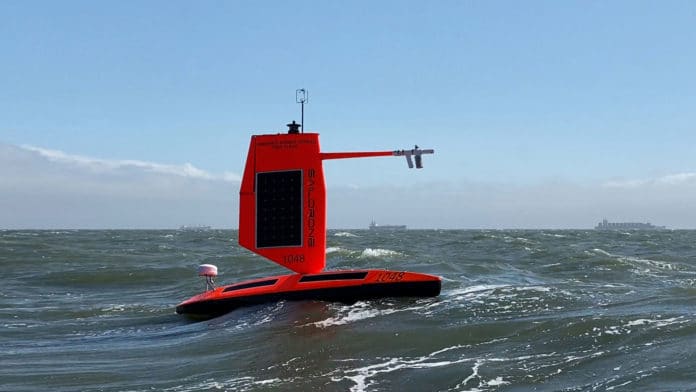A San Francisco’s Saildrone has announced a new mission to deploy five uncrewed surface vehicles (USVs) from the US Virgin Islands in August to collect in situ scientific data throughout the 2021 Tropical Atlantic hurricane season.
Saildrones are autonomous marine vehicles designed to navigate inhospitable areas where most scientific vessels cannot reach. The USVs will be equipped with specially designed “hurricane wings” to enable them to operate in extreme conditions. These ocean drones are the only USVs capable of collecting this data and are designed to withstand winds over 70 mph (110 km/h) and waves over 10 feet, which occur during a hurricane weather system.
“The new hurricane wing is a game-changer for the collection of in situ data in the most extreme weather conditions on earth,” said Richard Jenkins, Saildrone founder, and CEO. “Saildrone will be able to go where no scientific vessel has ever ventured, right into the eye of the hurricane, and gather data that could make communities around the world safer from these destructive storms.“
These five ocean drones will sail into the paths of hurricanes to provide valuable real-time observations for numerical hurricane prediction models and to collect new insights into how these large and destructive weather cells grow and intensify.
The company has developed two models of different dimensions, the Saildrone Explorer and the Saildrone Surveyor, both equipped with an array of data sensors, radar systems, and high-resolution cameras to map the ocean floor. The Saildrones are propelled by the wind, with the energy needed to power onboard electronics coming from solar panels. They can operate by remote control or autonomously along with prescribed waypoints.
The USV is able to track factors such as ocean currents, wind speeds, solar radiation, sea and air temperature, relative humidity, and carbon dioxide emissions and then send them back to the company’s headquarters via satellite.
Hurricanes present a persistent threat to human safety in coastal cities and a significant economic impact – hurricane damage in the US is estimated at around $54 billion annually. The mission aims to improve forecasts of deadly storms, reducing property damage and loss of human life.
The Saildrones will provide new in situ data to the National Oceanic and Atmospheric Administration (NOAA) ‘s Pacific Marine Environmental Laboratory (PMEL) and Atlantic Oceanographic and Meteorological Laboratory (AOML), Saildrone’s scientific partners in this audacious mission. The data will also be made available to folks at the National Weather Service, the National Environmental Satellite, Data and Information Service, and others.
“The biggest gap in our understanding of hurricanes are the processes by which they intensify so quickly, as well as the ability to accurately predict how strong they will become,” explained Dr. Jun Zhang, a scientist in the Hurricane Research Division at NOAA/AOML. “We know that the exchange of heat between the ocean and the atmosphere is one of the key physical processes providing energy to a storm, but to improve understanding, we need to collect in situ observations during a storm. Of course, that is extremely difficult, given the danger of these storms. We hope that data collected with Saildrones will help us to improve the model physics, and then, in turn, we will be able to improve hurricane intensity forecasts.“
